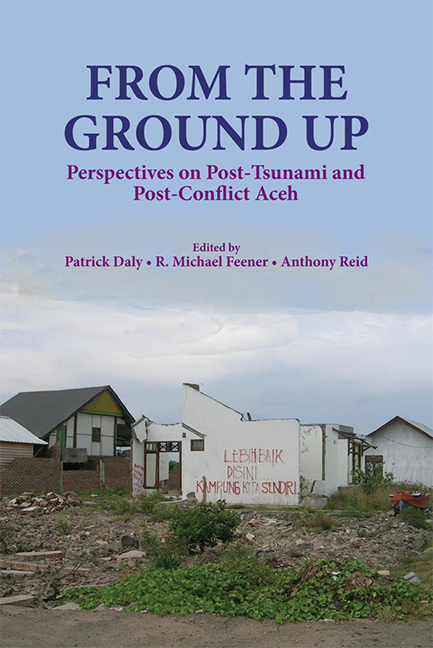Preface
Published online by Cambridge University Press: 21 October 2015
Summary
The tsunami that struck a dozen countries around the Indian Ocean on 26 December 2004 evoked international sympathy on a scale beyond any previous natural disaster. The unprecedented media coverage and humanitarian response was prompted not only by dramatic images relayed from hand-held cameras and phones, but by the inclusion of “First World” victims in an essentially “Third World” catastrophe. Among the areas hit by the tsunami were popular beach resorts in southern Thailand and Sri Lanka; Europeans, Americans and Australians were among the Indonesians, Indians, Thais and Sri Lankans who perished in huge numbers. The international relief effort broke all records both in scale and diversity, with seven billion U.S. dollars donated from all over the world through public and private agencies for Sumatra alone.
The disbursement of those funds and the rebuilding of housing, infrastructure and economy posed major national and international challenges. Indonesian President Susilo Bambang Yudhoyono (SBY) welcomed an unprecedented international relief effort which brought thousands of government and private aid workers to Aceh, transforming it from isolated backwater to international hub. After some initial uncertainty, he sidestepped the Indonesian bureaucracy and took the unprecedented step of establishing the novel Agency for the Rehabilitation and Reconstruction of Aceh and Nias (known by its Indonesian initials, BRR). The head of BRR, Kuntoro Mangkusubroto, had complete autonomy to act, as a minister responsible directly to the president.
However, this was not simply a reconstruction effort. Aceh at that time was a war zone; Indonesia's military was engaged in a major operation to crush a separatist rebellion that had been simmering since 1976. Curiously, two other hotbeds of separatism and repression, southern Thailand and Sri Lanka, were also severely affected by the 2004 tsunami, but without any peace dividend. In Aceh, however, the scale of the disaster, in conjunction with some other factors detailed in this book, became part of the remarkable peace of 2005.
- Type
- Chapter
- Information
- From the Ground UpPerspectives on Post-Tsunami and Post-Conflict Aceh, pp. vii - ixPublisher: ISEAS–Yusof Ishak InstitutePrint publication year: 2012

